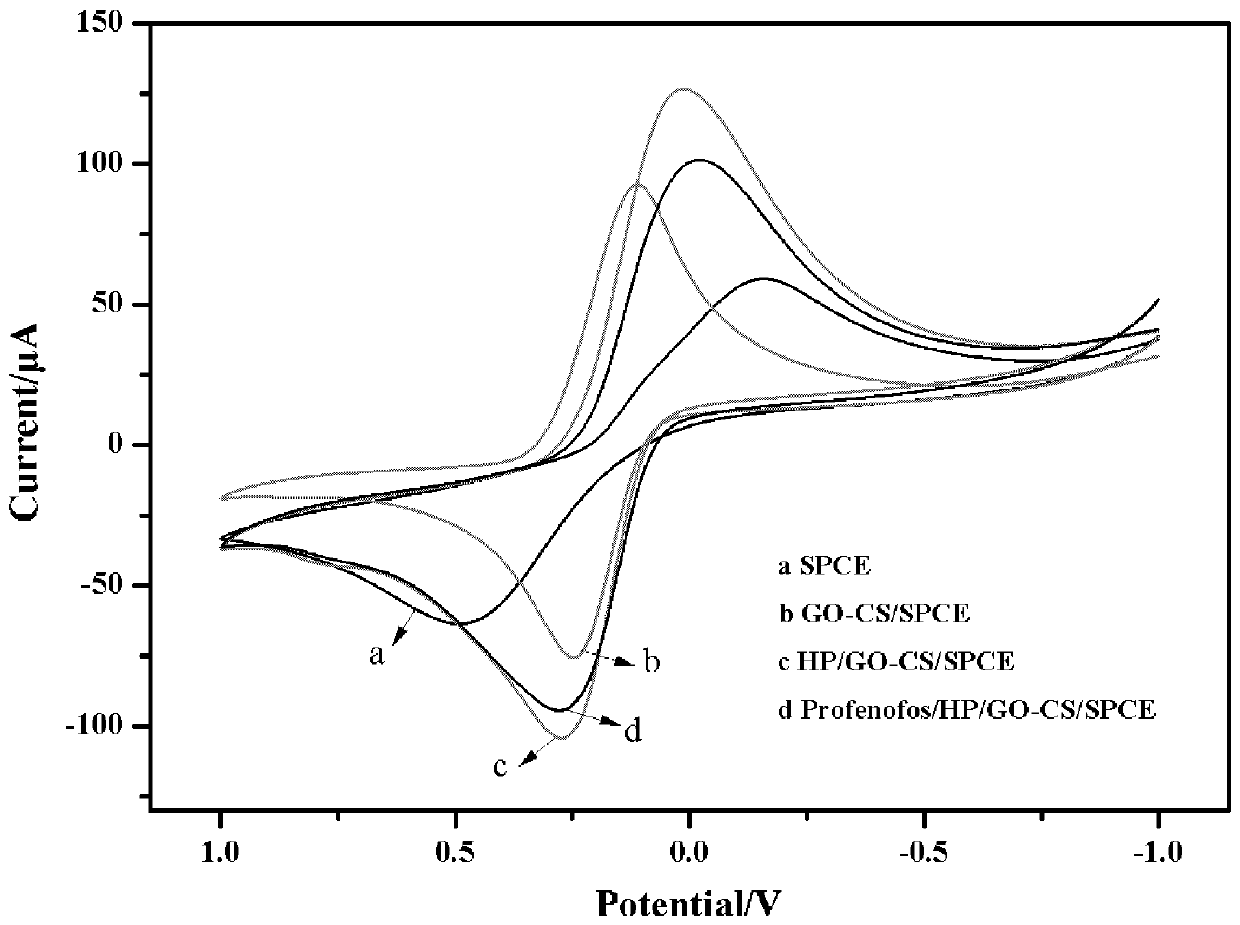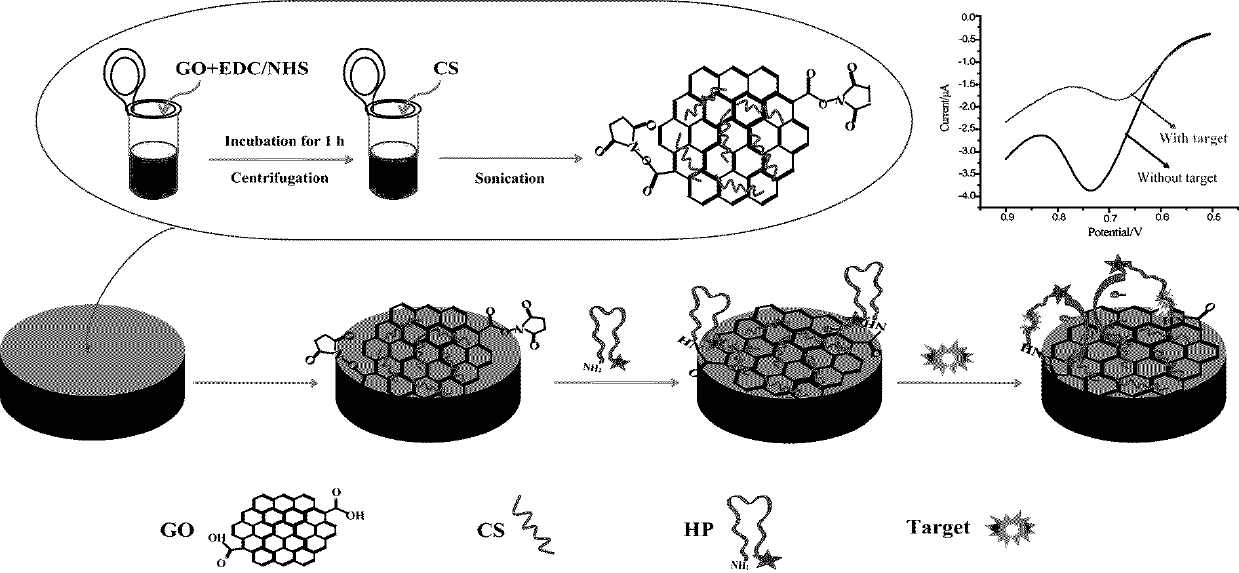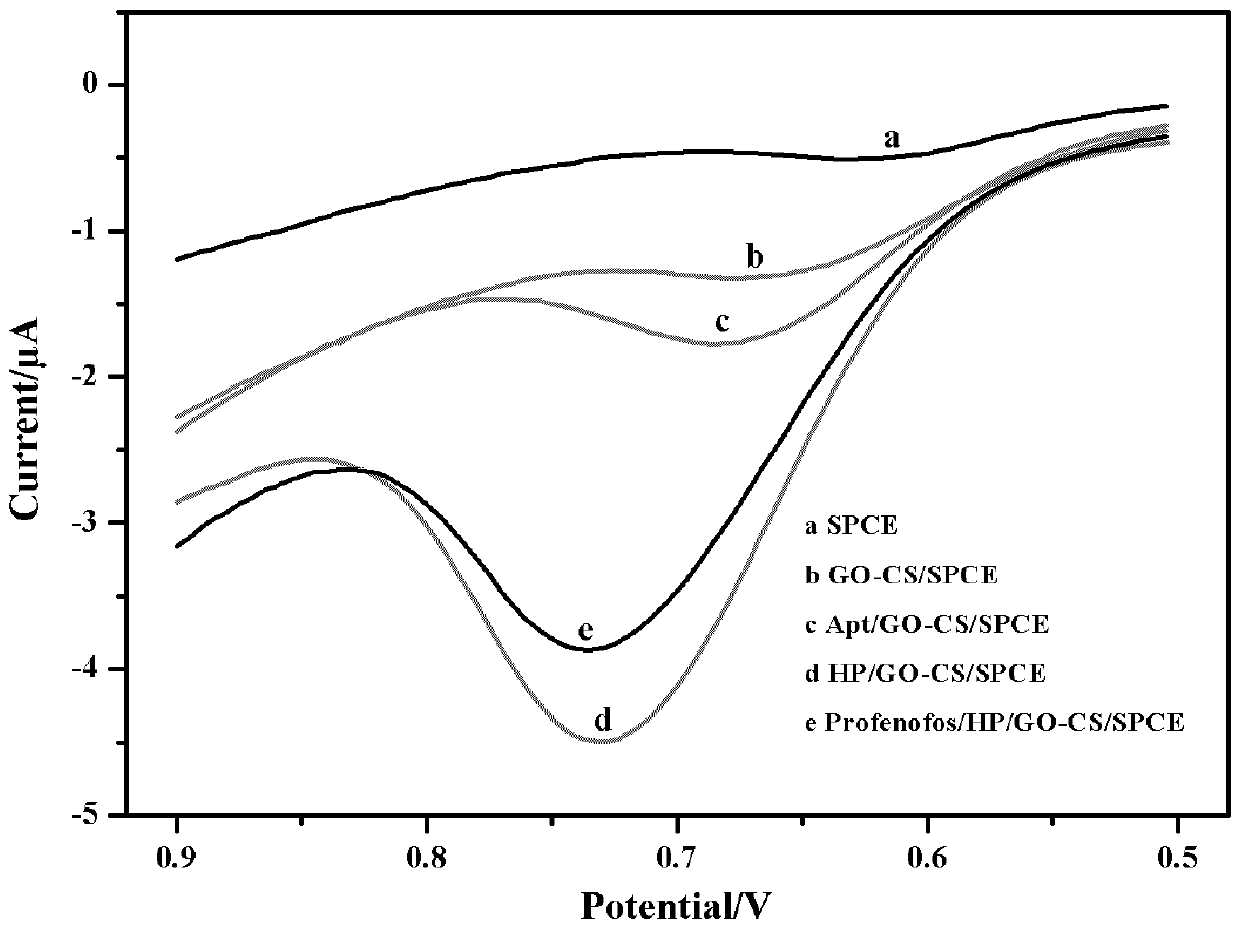Aptamer biosensor preparation method adopting ferrocene as electron donor, and application of aptamer biosensor
A biosensor and electron donor technology, applied in the field of electrochemical biosensor detection, can solve the problems of expensive equipment, time-consuming and laborious, and high technical requirements for operators, and achieve the effect of simple preparation method, high stability and specificity
- Summary
- Abstract
- Description
- Claims
- Application Information
AI Technical Summary
Problems solved by technology
Method used
Image
Examples
Embodiment 1
[0025] A method for preparing an aptamer biosensor based on ferrocene as an electron donor, the specific steps of the preparation method are:
[0026] (1) Design of the hairpin aptamer (HP) and preparation of its solution
[0027] At the 3′ end of the aptamer (5′-AGCTTGCTGCAGCGATTCTTGATCGCCACAGAGCT-3′), the base pair CAAGCT complementary to the first few base pairs (AGCTTG) at the 5′ end is added, and amino groups (-NH 2 ) and ferrocene (Fc), a newly synthesized aptamer chain (NH 2 -AGCTTGCTGC AGCGATTCTTGATCGCCACAGAGCTCAAGCT-Fc) was fitted and analyzed with DNAman software, and it was found that the hairpin structure could be effectively formed. In order to make the designed and synthesized aptamer form a hairpin structure, the aptamer stock solution was heated in a water bath at 95°C for 5 min, and then slowly cooled to room temperature. It was diluted to a 2 μM stock solution with Tris-HCl at pH 7.5 as solvent.
[0028] (2) Preparation of graphene oxide-chitosan (GO-CS) s...
Embodiment 2
[0039] Application of an aptamer biosensor based on ferrocene as an electron donor:
[0040] (1) Detection of organophosphorus pesticides in water
[0041] 8 μL of different organophosphorus pesticides at different concentrations were dropped onto the aptamer biosensor and incubated in air for 1 h. After being gently rinsed with ultrapure water and blown dry with nitrogen, the DPV electrochemical signals were measured in pH 7.4 phosphate buffer solution. The result is as Figure 4-7 shown ( Figure 4 profenofos, Figure 5 Phorate, Figure 6 isocarbophos, Figure 7 Omethoate), there is a good linear relationship between the DPV response signal and the logarithm of the concentration of the four organophosphorus pesticides. Their linear regression equations, linear ranges, correlation coefficients and detection limits are summarized in Figure 8 middle. The extremely low detection line of the sensor shows that the aptamer biosensor prepared by the present invention ha...
Embodiment 3
[0045] Performance test of an aptamer biosensor based on ferrocene as an electron donor:
[0046] (1) Specificity analysis
[0047] The selectivity of the aptasensor was tested using carbaryl, malathion, methamidophos, monocrotophos, chlorpyrifos and their mixtures as interfering pesticides. Such as Figure 10 Shown (a, b, c, d, e, f represent five interfering pesticides and their mixtures; g, h, i, j, k represent profenofos, phorate, isocarbophos and oxo Dimethoate and its mixture; l represents the mixture of these nine pesticides; all pesticides are at 10 nM), and when there are no specific targets (profenofos, phorate, isocarbophos and omethoate), the Larger chemical signals indicate that the aptamer cannot bind to these interfering pesticide molecules. In addition, there is no obvious difference between histogram k and l, which once again proves that the aptamer biosensor prepared by the present invention has good specificity and anti-interference ability.
[0048] (2)...
PUM
 Login to View More
Login to View More Abstract
Description
Claims
Application Information
 Login to View More
Login to View More - R&D
- Intellectual Property
- Life Sciences
- Materials
- Tech Scout
- Unparalleled Data Quality
- Higher Quality Content
- 60% Fewer Hallucinations
Browse by: Latest US Patents, China's latest patents, Technical Efficacy Thesaurus, Application Domain, Technology Topic, Popular Technical Reports.
© 2025 PatSnap. All rights reserved.Legal|Privacy policy|Modern Slavery Act Transparency Statement|Sitemap|About US| Contact US: help@patsnap.com



